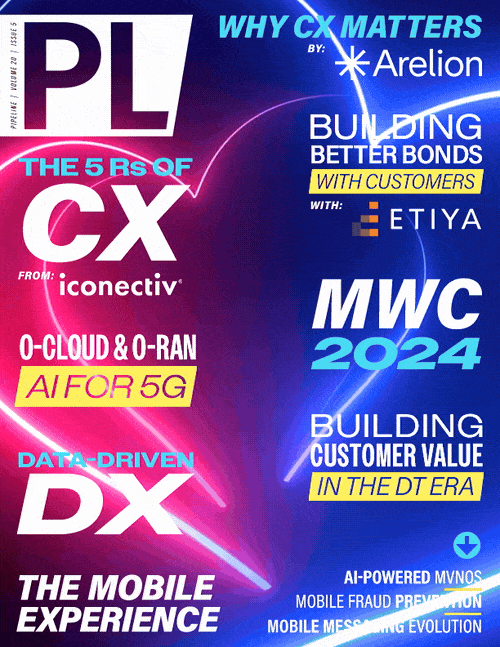Think Big, Start Small, Move Fast:
Building Lifetime Customer Value
By: Michael Matthews

Digital transformation solutions need not require complete system overhauls to be impactful in positive ways. Small changes in technology can have massive impacts. The same can be said for updating existing enterprise software to enhance customers’ journeys, experiences, and loyalty. Digital transformation doesn't necessarily equate to big, complicated processes. What matters is enhancing existing infrastructure in ways that produce returns on both short- and long-term investments. Let’s look at how telcos can start small, move fast, and successfully transform in ways that count.
The Winding Digital Road
The concept of digital transformation has been around for a long time. It is now a necessary core component of enterprise planning efforts. But developing new, faster network infrastructures requires huge expenditures, years of effort, and positive returns on investments are not guaranteed. Think 5G network deployment or installing a new broadband fiber backbone. Transformative mega projects of this nature may not deliver identifiable value for years. It’s certainly a tough place to start a conversation with investors looking for a strong, near-term business case for major capital expenditures. They want easily identifiable benefits and measurable short-term profitability without having to re-invent the wheel.
Focusing on Customers First
When searching for places to make the best, most meaningful impact in digital transformation, look to customer experience (CX). The best thing a company can do to be more profitable is to keep customers coming back for more. Striving to improve individual customer relationships and foster customer loyalty is key to not just optimizing marketing spend, but also for ensuring sustained revenue in competitive markets. This strategizing of customer retention efforts is sometimes called customer lifetime value. It is based on the idea that acquiring a new client is over six times more expensive than it is to keep a current one.
What does customer focus have to do with digital transformation? The answer, of course, is plenty. Consider the myriad ways customers engage with their CSP using a digital channel — email, instant messenger, text message, social media platforms, web browser digital assistants, or something else. From opening accounts and paying bills to software upgrades and adding new services, numerous touch points (and opportunities) exist and are ripe for improving overall CX. After all, the way customers engage with companies matters just as much as their perception of the quality of the services they provide.
CSPs should be looking for fast, profitable ways to initiate digital transformation, and the primary point of focus should be on growing customer lifetime value. But is implementing a new digital engagement suite actually fast and profitable? In the traditional way, no. The good news is that digital transformation doesn’t have to be done the traditional way anymore. Let’s take a look at the way it’s been done in the past compared to the way it’s going now.
Taking the Long Way?
The thought of revamping a digital communication suite can be intimidating; the process is very often problematic. Leaders know from experience that such endeavors will inexorably run into thorny
and resource-intensive obstacles on the road to developing new processes, breaking down legacy departmental silos, and revamping existing data management systems. Sorting through and evaluating the myriad
technologies that may or may not help address problems often leads to choice-paralysis. In fact, over half of business leaders
aiming for digital transformation goals said their biggest concern was integrating new solutions into their everyday business dealings. The implications are clear: although they want to use their
own available data and information, the mix of new and legacy systems becomes too complicated to face. As a result, many leaders become scared of implementing any change, sometimes
pausing their
efforts altogether at any sign of risk or uncertainty. Perhaps this hesitancy is why nearly half of all digital transformation efforts deliver much lower return on investment (ROI) than expected.



















